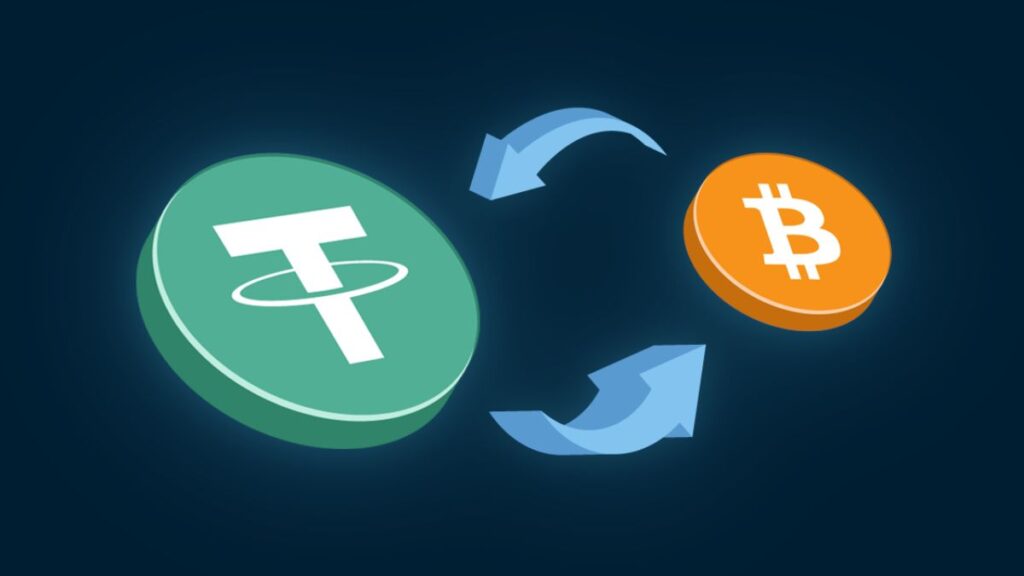As the cryptocurrency ecosystem matures, the demand for seamless, secure, and decentralized asset swaps continues to grow. For Bitcoin (BTC) holders, moving between BTC and stablecoins like Tether (USDT) has long been a cumbersome process, often requiring custodians, wrapped tokens, or centralized exchanges. But that narrative is rapidly changing.
Symbiosis, a decentralized cross-chain liquidity protocol, now empowers users to swap native BTC to USDT — instantly, without wrapping, intermediaries, or account registration. This evolution in crypto infrastructure addresses not only technical challenges but also key concerns around trust, transparency, and usability.
In this deep dive, we’ll explore how Symbiosis enables these seamless swaps, why they matter, and what cutting-edge technologies make it all possible.
The Problem with Traditional BTC-to-USDT Swaps
Swapping BTC for USDT might sound simple on the surface, but the traditional process is riddled with inefficiencies:
-
Custodial Risks: Centralized exchanges (CEXs) like Binance or Coinbase often act as the intermediary. While convenient, they hold your assets during the swap — introducing counterparty risk.
-
Wrapped Tokens: On DeFi platforms, BTC must usually be “wrapped” into an Ethereum-compatible token like WBTC. This process is not only complex but relies on trust in the custodian issuing the wrapped asset.
-
Slow Settlement: BTC’s native network is not designed for rapid transaction finality, which can delay swaps and add uncertainty.
-
Privacy Tradeoffs: KYC/AML compliance requirements on centralized platforms force users to sacrifice personal information for access.
For users prioritizing decentralization, speed, and control, these friction points are significant — and until recently, unavoidable.
Symbiosis: A New Paradigm for Cross-Chain Asset Swaps
Symbiosis solves these challenges by enabling native BTC-to-USDT swaps directly from the Bitcoin blockchain to any supported chain where USDT is issued — no intermediaries, no wrapping, and no off-chain dependencies.
Key Features:
-
🔁 Native BTC Swaps: Send actual BTC from a Bitcoin wallet — no conversion to wrapped assets required.
-
🔒 Fully On-Chain: Every step of the swap is verifiable on-chain; no central party holds your funds.
-
🆓 No Account or KYC Needed: Simply connect your wallet and initiate a swap. Your identity remains yours.
-
⚡ Fast Settlement: Cross-chain liquidity routing ensures efficient execution with competitive fees.
This means you can hold BTC in your native wallet and still participate in DeFi strategies like yield farming, stablecoin trading, or hedging — all without moving to a centralized platform.
How It Works: The Cross-Chain Infrastructure Behind the Scenes
The true innovation lies beneath the surface. Symbiosis leverages a sophisticated network of cross-chain infrastructure providers that have built interoperability bridges between Bitcoin and other smart contract-enabled blockchains.
Let’s break down the core technologies enabling this seamless experience.
🔗 THORChain — Decentralized Liquidity for Native Assets
THORChain is a decentralized liquidity protocol that facilitates swaps between native assets — including BTC, ETH, and USDT — without wrapping. It acts as a cross-chain Automated Market Maker (AMM), enabling non-custodial asset exchanges using vaults controlled by a network of validators.
By integrating with THORChain, Symbiosis taps into deep liquidity pools and routing mechanisms that allow BTC to be swapped for stablecoins like USDT on other chains such as Ethereum or Binance Smart Chain — all in one user-friendly interface.
Benefits:
-
No wrapping or bridging
-
Deep liquidity for high-volume swaps
-
Transparent validator incentives and slashing to ensure security
⚙️ Rootstock — Bitcoin-Powered Smart Contracts
Rootstock (RSK) brings smart contract capabilities to Bitcoin. As a sidechain pegged to BTC, it supports EVM-compatible contracts and opens the door to native Bitcoin DeFi.
With Rootstock, Symbiosis can route swaps through a Bitcoin-pegged environment that respects the security model of BTC while enabling faster settlement and interoperability.
Use Case:
-
BTC-to-RSK-bridged USDT swaps
-
Low-fee smart contract execution for swap logic
-
A path to future BTC-native yield protocols
🔁 Chainflip — Cross-Chain AMM Designed for UX
Chainflip is a protocol designed to make cross-chain swaps as simple as using a single-chain DEX. It provides native-to-native swaps using Just-in-Time liquidity and a cross-chain State Machine that verifies and routes transactions without wrapping.
For Symbiosis users, this means:
-
No need to switch wallets or chains
-
Faster swap confirmation across Bitcoin and Ethereum-based networks
-
Reduced slippage and optimized routing
Chainflip complements the liquidity provided by THORChain while improving the user experience and execution speed.
🧠 BitVM — Programmable Logic on Bitcoin
BitVM is an emerging technology enabling programmable logic to run on the Bitcoin network through off-chain computation and on-chain verification.
While still in its early stages, BitVM offers potential for more complex swap logic, contract validation, and dispute resolution — all without leaving the Bitcoin chain.
Incorporating BitVM into future iterations of Symbiosis could mean even more robust and secure BTC-based DeFi experiences.
Why Native BTC-to-USDT Swaps Matter
Let’s dig into the practical implications for everyday users and institutions alike.
🔄 Portfolio Balancing
Crypto portfolios often include a mix of volatile and stable assets. Swapping BTC to USDT is a common strategy to hedge against market downturns or to lock in gains during bull markets.
With Symbiosis, users can rebalance their portfolios without:
-
Using centralized exchanges
-
Paying high fees for withdrawal or deposit
-
Wrapping BTC into ERC-20 tokens
This keeps your assets in your control while maintaining flexibility.
🛡️ Risk Management
In fast-moving markets, timing is everything. Delayed swaps or technical friction can lead to poor execution prices or increased exposure.
Symbiosis enables:
-
Instant settlement
-
Access to DeFi-native risk tools (like stop-loss contracts or USDT farming)
-
A faster escape from volatility
Whether you’re managing a retail wallet or institutional fund, this can help minimize unnecessary risk.
🌾 Yield Farming and DeFi Participation
Many DeFi protocols offer attractive yields on USDT, especially on networks like Ethereum, Arbitrum, or Optimism. However, BTC holders often face friction in accessing these opportunities.
Symbiosis makes it easier to:
-
Swap BTC to USDT and bridge it to any supported chain
-
Deploy stablecoins into DeFi vaults or farms
-
Avoid relying on centralized custody or wrapped versions of BTC
🕵️ Privacy and Control
Perhaps most importantly, Symbiosis respects the ethos of crypto: your keys, your coins.
Because the swap process:
-
Is non-custodial
-
Requires no account or KYC
-
Occurs entirely on-chain
…users retain full sovereignty over their funds and data. There’s no surveillance, tracking, or account bans — just decentralized infrastructure doing what it was built to do.
The User Experience: Simple, Streamlined, Secure
Here’s what the typical BTC-to-USDT swap looks like using Symbiosis:
-
Connect Your Wallet: Whether it’s a native Bitcoin wallet (like Sparrow or Electrum) or a smart contract-compatible one (like MetaMask), you start from your own custody.
-
Select the Swap Pair: Choose BTC on one side, USDT on your desired destination chain on the other.
-
Enter Amount and Confirm: Input how much BTC you want to swap. You’ll see the estimated amount of USDT, fees, and time.
-
Execute Transaction: Sign and send the transaction directly from your wallet.
-
Receive USDT: The USDT appears in your destination wallet — no registration, no delay.
All of this happens via a single interface that abstracts away the complexity of routing, liquidity sourcing, and chain bridging.
Security Considerations
Security is always a concern in the world of DeFi. Symbiosis addresses this with:
-
Audited Smart Contracts: All contracts are open-source and undergo rigorous third-party audits.
-
Distributed Validators: Swap routing and liquidity are handled by networks with proven validator and consensus mechanisms.
-
Non-Custodial Architecture: Users never relinquish control of their private keys.
By building on trusted protocols like THORChain and Chainflip, Symbiosis inherits their security models — creating a layered defense against exploits or failures.
What’s Next for Cross-Chain Swaps?
Native BTC-to-USDT swaps are just the beginning. As infrastructure improves, expect:
-
🌉 Expanded Asset Support: More chains, more stablecoins, and more DeFi integrations
-
⛓️ Smarter Routing: AI-enhanced pathfinding for best execution
-
🛠️ Custom Strategies: Build automated portfolio management tools directly into the Symbiosis interface
-
🧩 Composable Protocols: Interact with DEXs, lending markets, and yield farms right after swapping — without leaving the platform
This positions Symbiosis as more than just a swap service — it becomes a gateway to multi-chain DeFi.
Final Thoughts: Redefining Bitcoin’s Role in DeFi
For years, Bitcoin has existed on the periphery of decentralized finance. Its UTXO-based design and lack of native smart contracts limited its utility beyond being “digital gold.”
But that’s changing.
Symbiosis, with the help of protocols like THORChain, Rootstock, Chainflip, and BitVM, brings Bitcoin into the DeFi fold — on its own terms. No more wrapping. No more middlemen. Just native BTC, flowing seamlessly into stable assets and back, controlled entirely by the user.
If you’re a Bitcoin holder looking for greater utility, control, and access to stable yield strategies — Symbiosis is building the bridge you’ve been waiting for.
Try it yourself. Experience frictionless BTC-to-USDT swaps today — the decentralized way.






